Il Desco is a family-run restaurant in the heart of Verona, and has been here since 1981. The name means "eating at home with friends", and this is reflected in the hearty dishes from the region. The head chef was Elia Rizzo, who trained with legendary chef Gaulterio Marchesi (the first Italian chef to be awarded three Michelin stars in 1984 for his Milan restaurant, and known for falling out publicly with Michelin after controversially being demoted by them). Elia's son Matteo also works in the kitchen, and Elia’s wife Ana is in charge of the front of house.
The restaurant is in a 15th century house, with an ornate, decorated wooden ceiling. The dining room had a dozen tables, fairly well separated, with rugs covering the wooden floor. The Motown music playing quietly in the background seemed a little incongruous in such a traditional setting (some Italian opera perhaps?). Tasting menus were priced from €95 to €135 in addition to the a la carte menu.
The lengthy wine list covered all the regions of Italy, as well as French wines and a smattering of alternatives, at the kind of markups that Londoners can only dream of. Aglianico Vecchio Postales Irpinia A Casa Avellino Rossi was €28 for a wine you can find in the high street for €15, Jermann Vintage Tunina 2009 was €70 for a wine that you can find in a shop for €42, Bertani Amarone Della Valpolicella was €180 for a wine that retails at €154, and Antinori Tignanello 1998 (which we drank) was €130 for a wine that retails at €103. Bread was served with a very light mousse of Gorgonzola and marscapone cheese. Whilst the mousse was very impressive, the bread itself was ordinary (at most 14/20). Apparently they used to make the bread from scratch, but now buy it in from a local baker called Franchini.
The meal began with a nibble of chickpea soup with rosemary oil and sweetbreads. The sweetbreads themselves were carefully cooked and had good flavour, the chickpea broth thick and pleasant without being exciting (16/20). Linguine of lobsters with lime and coriander was an enjoyable dish, the highlight being the tender lobster. The pasta had good texture and the lime provided a nice acidic balance to the lobster (16/20). Scampi is a pub cliché in the UK, but here featured superb langoustines, deep fried in a reasonably light batter and served with a green salad. The batter was fine if not in the league of the airy batter in top tempura restaurants in Japan, but the dish was elevated by the sheer quality of the lovely langoustines (17/20).
The chef here is noted for his risotto, and it showed in a risotto of peas. The risotto had a creamy texture and was made with superbly fresh peas. The rice used is here was not arborio or carnaroli, but vialone nano, local japonica rice from Verona that is noted for its quality as risotto rice. This was a top class risotto, the rice beautifully tender, the stock used high class, the peas having lovely flavour (19/20).
Suckling pig was served with mash of violet potatoes and white bean cream. The pork itself had good flavour, but the mix of the pork and the mash and onion cream was richness on richness; the dish was crying out for an acidic element. By now the generous portion sizes were telling, as after the large risotto portion, this rich dish was too much to finish (16/20). Sea bass was carefully cooked and had lovely flavour, served with good dried morels, spinach and a meat jus. Again this was a rich dish, but seasoning was spot on and the high quality sea bass came through as the principal flavour (17/20).
For dessert I tried millefeuille of apple and ginger chutney. The pastry was thin and delicate, the apple flavour providing good acidity and the ginger quite potent. I liked this dish very much, the balance of the dish working well (17/20). Also good was coffee granita with whipped vanilla cream, chocolate and a little crispy rice. The key to the success of his dish was the deep intensity of the coffee flavour, balancing the rich chocolate (18/20). Coffee at the end of the meal was good, served with a few petit fours: shortbread biscuit, bitter chocolate tart, Chinese gooseberry, crispy rice covered in chocolate and a coconut chocolate (17/20). The bill was €212 (£172) per head, but this was with some classy wine. You could eat for a lot less.
Service was good throughout the meal, the chef very much present in the dining room, with topping up of wine, water and bread carefully attended to. This restaurant provided a nice example of traditional cooking of the region, featuring high grade ingredients such as the lovely langoustines, and high class technique in the kitchen, as shown in the risotto. Portions were, for me, a little too large, and generally the cooking was quite rich, but this was very enjoyable food.

-
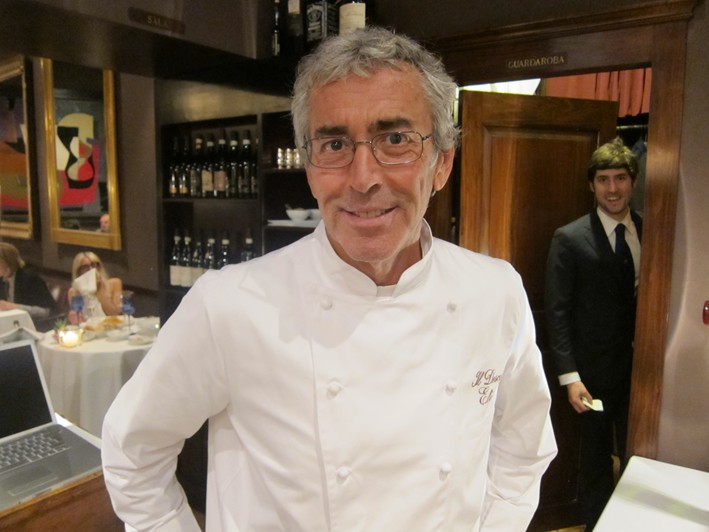 chef 2
chef 2

-
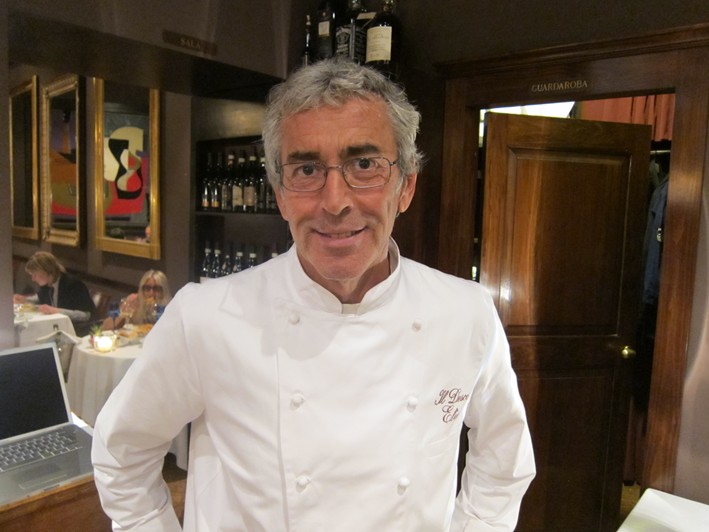 chef
chef

-
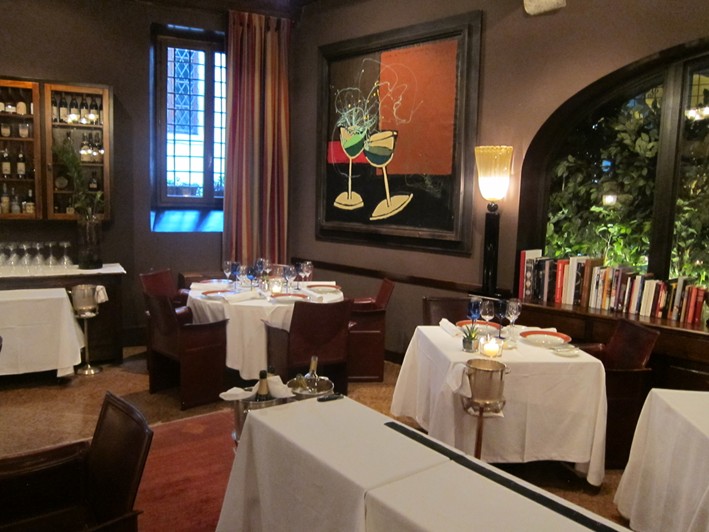 dining room
dining room

-
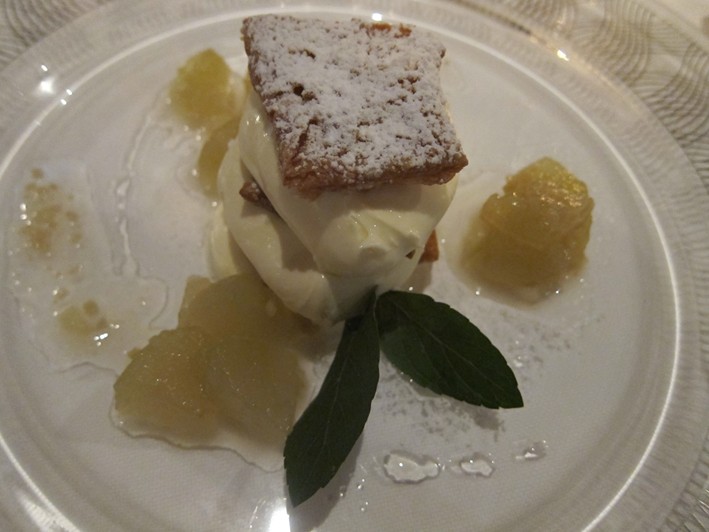 millefeuille
millefeuille

-
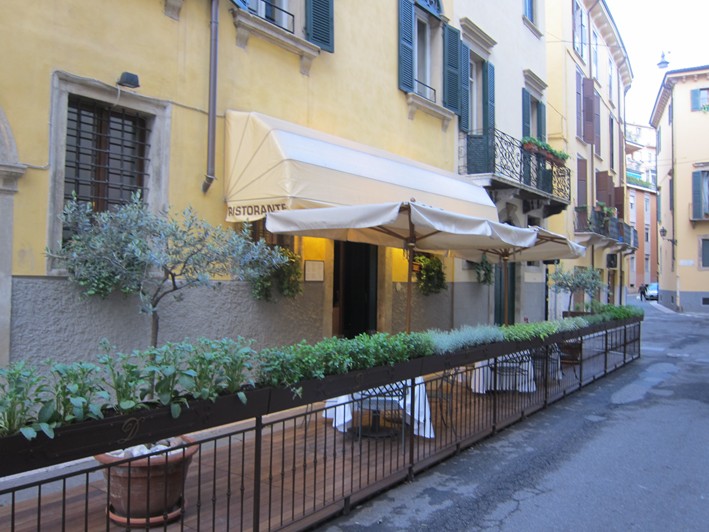 outside
outside

-
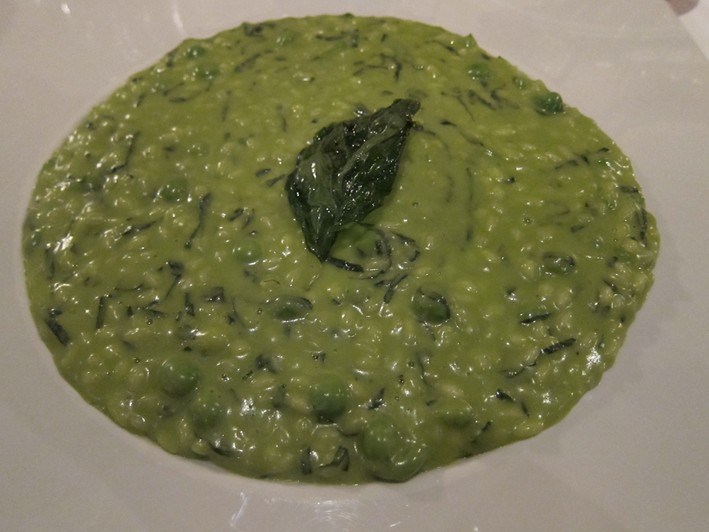 pea risotto
pea risotto

-
 scampi
scampi

-
 sea bass
sea bass

-
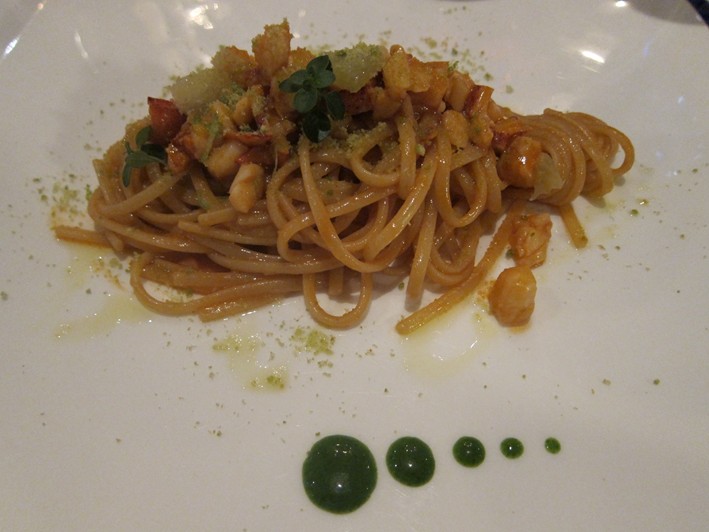 spaghetti
spaghetti

-
 suckling pig
suckling pig

-
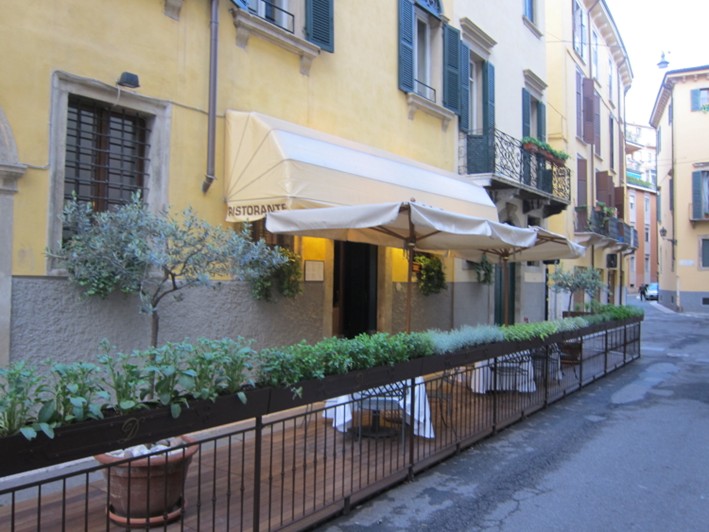 front
front

-
 head chef
head chef

-
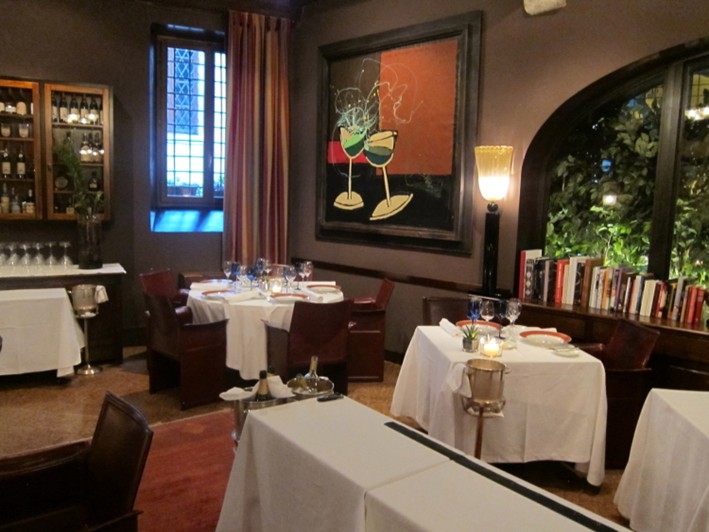 room
room

-
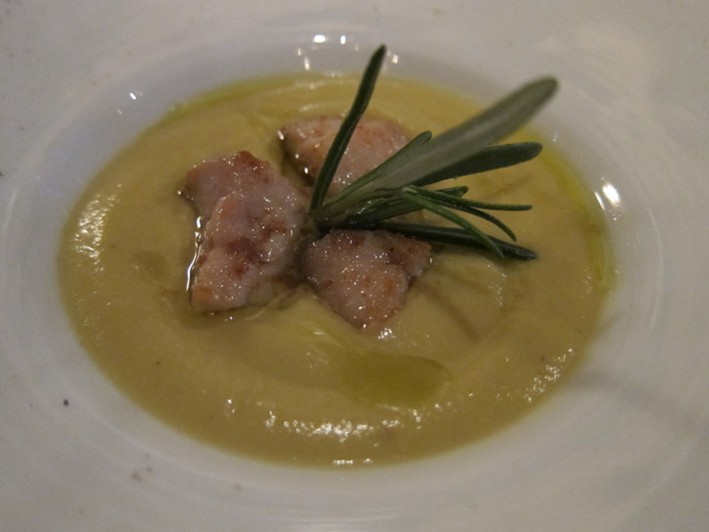 sweetbreads
sweetbreads

-
 tiramisu
tiramisu

Italian cuisine
 Average Price £120
Price I paid £172
Value for money
££££££
Overall rating 17/20
Michelin star
Average Price £120
Price I paid £172
Value for money
££££££
Overall rating 17/20
Michelin star

The type of cuisine served at this restaurant
Typical price for three courses and modest wine
What I actually paid on this particular visit
Calculated from overall rating/average price: £££££ is best, £ least good
Score for the food from 1 to 20, with 20 being world class
Currently has at least one Michelin star
















Add a comment
Thank you for submitting your comment, this will be checked and added to the website very soon.
User comments